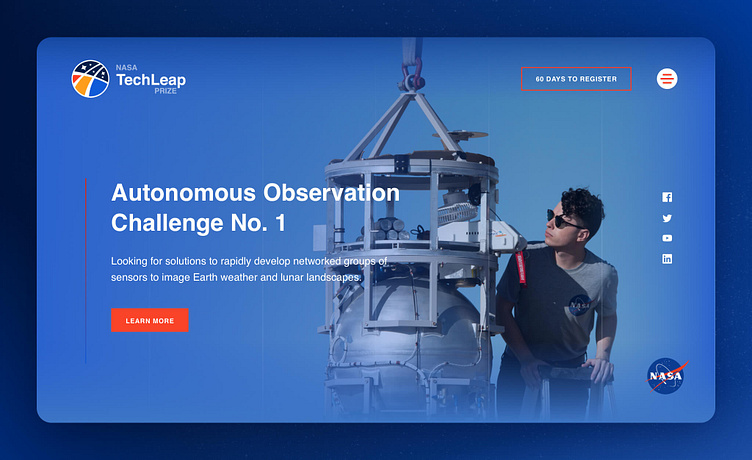NASA TechLeap Prize - Web Design
Overview and Objectives
The Autonomous Observation Challenge No. 1 was the first of a series of three challenges that would rapidly identify and develop technologies of significant interest in order to support future missions and reduce risk.
Bringing Preconceptions Back to Earth
When someone mentions NASA, folks usually think of space craft, legendary astronauts, and great stories of the Space Race. While these are very much part of NASAs history, they do not fully encompass the work and effort put forth by the many departments and teams that make up the historic government agency. Flight Opportunities is one such department, investing in promising technologies for space exploration, discover, and the expansion of space commerce through suborbital testing with industry flight providers. The program matures capabilities needed for NASA missions and commercial applications while strategically investing in the growth of the U.S. commercial spaceflight industry.
This site was an extension of the NASA brand, drawing directly from established guidelines, and pulling some outward inspiration for minor elements. This was also the first of three challenge sites (thus the No. 1 in the site name), all of which would use the same shell (layout, font characteristics, sitemap, etc.), and would therefore need a fairly broad visual language. The primary design requirements were consistency with NASA branding guidelines (some of these were adapted from their print guidelines) and accurately portrayed subject matter through images.
The NASA blue and red were heavily featured in the design, with an added yellow-gold, which would serve as the primary color of the second or third site of the series. Vibrant call to actions, gradients, and drop shadows against a white backdrop were used as well.
Images were sourced directly from the Flight Opportunities database. Specific NASA contractors, involved in the design of Flight Opportunities technology, were to be equally represented in the images used across the site. This requirement, combined with acquiring well-photographed images of the technology in question, let to much time perusing image databases.
Check out the site at















